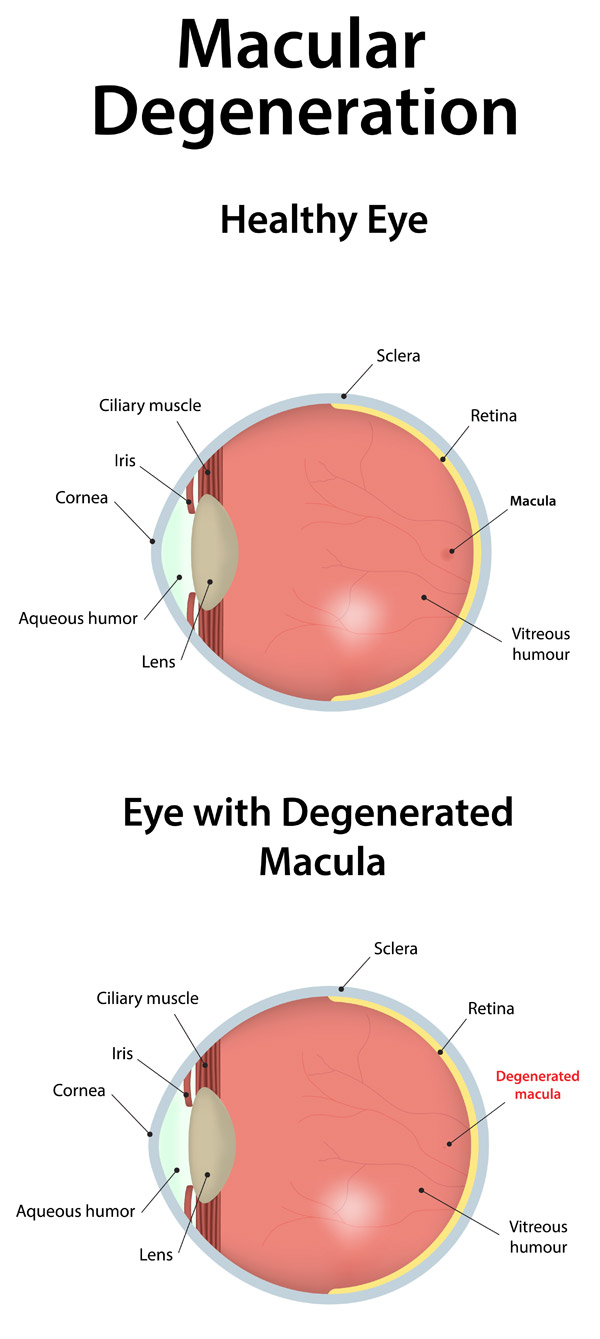Macular Degeneration: Dry AMD
Dry AMD occurs when the light-sensitive cells in the macula slowly break down, gradually blurring central vision in the affected eye. As dry AMD gets worse, you may see a blurred spot in the center of your vision. Over time, as less of the macula functions, central vision in the affected eye can be lost gradually.
The most common symptom of dry AMD is slightly blurred vision. You may have difficulty recognizing faces. You may need more light for reading and other tasks. Dry AMD generally affects both eyes, but vision can be lost in one eye while the other eye seems unaffected.
What Are Drusen?
One of the most common early signs of dry AMD is drusen. Drusen are yellow deposits under the retina. They often are found in people over age 60. Your eye care professional can detect drusen during a comprehensive dilated eye exam.
Three Stages of Dry AMD
Dry AMD has three stages -- early AMD, intermediate AMD, and advanced dry AMD. All of these may occur in one or both eyes.
- People with early dry AMD have either several small drusen or a few medium-sized drusen. At this stage, there are no symptoms and no vision loss.
- People with intermediate dry AMD have either many medium-sized drusen or one or more large drusen. Some people see a blurred spot in the center of their vision. More light may be needed for reading and other tasks.
In addition to drusen, people with advanced dry AMD have a breakdown of light-sensitive cells and supporting tissue in the macula. This breakdown can cause a blurred spot in the center of your vision.
In addition to drusen, people with advanced dry AMD have a breakdown of light-sensitive cells and supporting tissue in the macula. This breakdown can cause a blurred spot in the center of your vision.
Over time, the blurred spot may get bigger and darker, taking more of your central vision. You may have difficulty reading or recognizing faces until they are very close to you.
If Only One Eye is Affected
If you have vision loss from dry AMD in one eye only, you may not notice any changes in your overall vision.
With the other eye seeing clearly, you can still drive, read, and see fine details. You may notice changes in your vision only if AMD affects both eyes. If you experience blurry vision, see an eye care professional for a comprehensive dilated eye exam.

